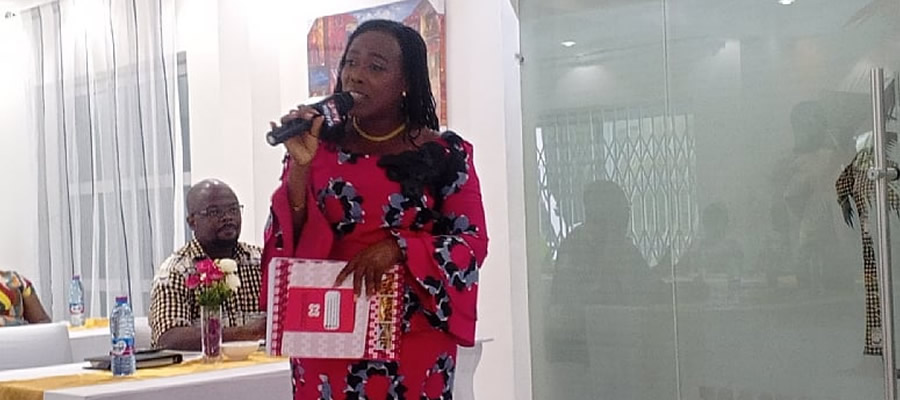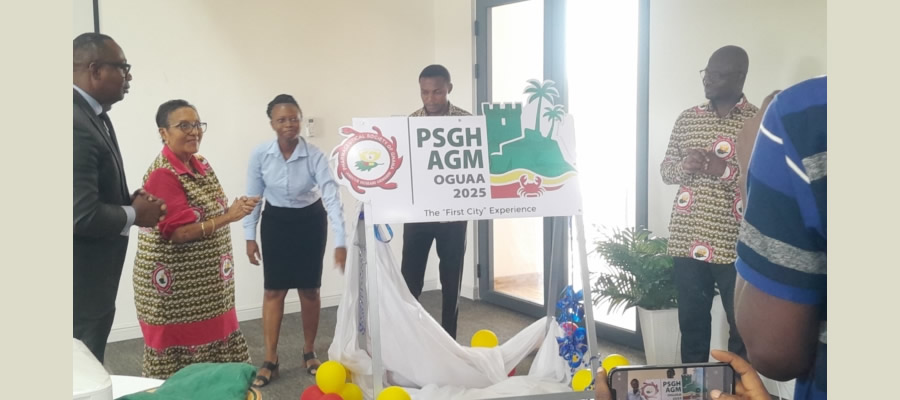

Health
Cape Coast Metropolis has 18 health facilities delivering health services to the residents as presented in the table below.
Table 8:Health facilities
Nutrition
The daily projected nutrition (food energy) demands of Cape Coast Metropolis at the end of the planned period is estimated to be 360 megajoules or 52,082.62 metric tonnes of food per annum. This is made of 15,182 tonnes of staple food, 16,144.02 tonnes of protein, 6,918.87 tonnes of vegetables and 13,837.73 tonnes of fruits.
Metropolitan Health services
The broad goal of health services delivery is to improve the health of all people living in the municipality regardless of age, ethnicity, religious conviction, political affiliation or socio-economic standing. This broad goal encompasses many specific objectives, among them, an increase in life expectancy, reduction in morbidity and fertility rates, and improvement in quality of life.
The specific objectives of the health care delivery in line with the Government’s Poverty Reduction Strategy for 2002-2004 is to:
- Improve the health status of the poor in the country by ensuring a balance between direct health care delivery on one hand and the preventive aspects such as the provision of potable drinking water and good sanitation on the other;
- Promoting equity in health service provision with special emphasis on reducing spatial disparities in the country;
- Enhancing efficiency in health services delivery;
- Ensuring sustainable financial arrangements that protect the poor and the vulnerable; and
- Strengthening links with health-related sectors of society.
- Organization and Management of Health Services
Health Services are mix of both government and private institutions, and are structured along the three-tier system of the Primary Health Care strategy. The levels are;
Community Level (Level A)
Here services to communities are delivered mainly through outreach programmes. However, services of Traditional Birth Attendants (TBAs), chemical sellers, traditional healers and private clinics are available to community members. Nearly 50 TBAs and 48 Traditional Healers are registered and qualify to practise . There are also 31 Chemical Sellers, 7 Pharmacy Shops as well as 12 private clinics in the Metropolis.
Sub-District Level (Level B).
’The Assembly is demarcated into four health sub-districts namely: Cape Coast, Ewin, Adisadel and University sub-districts. These demarcations are done around existing facilities i.e. Cape Coast MCH/FP Centre, Ewim Urban Health Centre, Adisadel Urban Health Centre and the University of Cape Coast.
Level (Level C)
The Cape Coast Hospital (Interburton) is the Regional Hospital and is located at Abura. The former Central Regional Hospital now serves as the District Hospital.
The University Hospital currently supplements the efforts of the two facilities cited above. The Public Health Services at this level are co-ordinated by the District Health Management Team headed by the Municipal Health Director.
The team focuses on providing support to sub-districts in disease prevention and control, health promotion and general education of the public on health issues. All the health facilities are located in the Cape Coast town, which serves as both regional and district capital. Owing to the relatively small land area of the Municipality, distances to health facilities are generally not a major problem.
However, congestion on the Abura-Cape Coast road is now beginning to cause delays to the traveling public and needs to be seriously considered for expansion. The present rehabilitation work on it may ease the pressure of motorists for some time, but a more lasting solution is advocated.
Main Diseases and Causes of Death
The ten top prevalent diseases in the Municipality as recorded at the OPDs of health facilities are shown in Table 5. below. It is clear that malaria (44,684), Upper Respiratory Infection (11,142), Skin Disorders (5,565) and Diarrhoea Diseases (3,642) are the commonest. However, the ten top causes of mortality between January and June 2002 in the municipality were found to be
- Malaria (26.8%)
- Anaemia (19.1%)
- Pneumonia (8.1%)
- Tuberculosis (7.7%)
- HIV/AIDS (4.8%)
- Hypertension (3,8)
- Cerebral Vascular Accidents (CVA) i.e. Stroke (3.8%)
- Gastro-intestinal Disorders (3.3%)
- Meningitis (2.4%)
- Cord Sepsis (1.9%)
Apart from the ten top prevalent diseases in the municipality, there are a number of priority diseases of public health importance because of their socio-economic impact on the people. These are shown in Table 6, with malaria, tuberculosis, typhoid, cholera and HIV/AIDS coming out strongly.
There is the need to place emphasis on these diseases and especially HIV/AIDS, in line with Government’s policy to halt the rapid spread of it among the youthful population and safe the next generation from destruction.
Table 4: Top Ten Diseases in the Cape Coast
Rank Disease Number
01 Malaria 44,684
02 Upper Respiratory Tract Infection 11,142
03 Skin Dieases 5,565
04 Diarrhoea 3,642
05 Disease of Oral Cavity 2,539
06 Gastro-Intestinal Diseases 2,162
07 Hypertension 1,795
08 Gynaecological Diseases 1,785
09 Anaemia 1,749
10 Accidents/Burns/Fractures 1,561 Total 76,642
Source: Health Directorate, Cape Coast, December 2002
Table 5. Diseases of Public Health importance in the Municipality
- Disease Number Reported, 2002
- Malaria 44,684
- Tuberculosis 224
- Typhoid 692
- Cholera 624
- Guinea worm 0 (on surveillance)
- Poliomyelitis 0 (on surveillance)
- Measles 8 (on surveillance)
- Malnutrition 123
- Neonatal Tetanus 5
- Yaws 243
- Leprosy 0 (on surveillance)
- HIV/AIDS 96
- Anaemia 1,749
- Diarrhoea 3,642
Source: Ministry of Health, Cape Coast, 2002
It has to be noted that the diseases prevalent in the Metropolis are generally environmental-related as well as communicable. This emphasises the importance of water and environmental sanitation as well as personal hygiene in controlling the incidence and deal with dislodging excreta from the over 800 pan latrines into septic tanks to the final disposal site. This activity is performed by an old cesspit emptier, which does not serve that purpose effectively due to frequent breakdowns.
Refuse disposal is also a problem. Ten metallic/wooden containers are placed at strategic points in the Municipality to hold refuse. They are then removed daily to final dumping sites. Apart from these containers, approved refuse dumps have been sited at vantage points within the communities. Some communities on their own have also created unapproved sites. Others simply dump refuse and human excreta into open spaces, the bush and the beach. These are unacceptable ways of disposing of wastes and must be addressed.
Regular de-silting of the main drains in the Municipality is also a problem. The undulating nature of the terrain, the attitude and practices of some people as well as inadequate logistics and personnel tend to complicate the already serious problem. These human problems can be tackled through education.
Other areas of focus in terms of health and sanitation are the slaughterhouse and unapproved sites being used for these purposes. It is common knowledge that unhygienic conditions exist in the main slaughterhouse in Cape Coast. It is also the case that some butchers prefer to use unapproved sites where they prepare the carcasses with lorry tyres and rubbish. The extent to which these materials pose health problems for consumers is yet to be established and the practice must be stopped sooner than later.
Targets
Within the plan period it is expected that programmes in the sector will lead to the attainment of the following objectives:
- Provision of good public places of convenience in all communities
- Rehabilitation of existing public toilets.
- Phasing out of all domestic pan latrines
- Provision of suitable refuse disposal facilities including the monitoring of the collection points and the final disposal site at Nkanfoa.
- Rationalizing and up-dating bye-laws to ensure safe management of both liquid and solid wastes at the household and community levels,
- Intensified education of safe sanitation practices
There is a mix of both government and private Health Institutions. The Municipality is served by the Municipal Hospital with the Regional Hospital as a referral Hospital. The University Hospital supplements the efforts of the Municipal Hospital. To improve access to health services the Municipality has been divided into five sub-districts namely; Adisadel, UCC, Ewim, RCH/Central sub-district, and Efutu Sub-districts.
There are eleven (11) Private Clinics and one (1) Private Maternity Home. The PPAG Clinic with a Youth Friendly Centre provides Family Planning and Counseling services for the Adolescents and Adults. At the Community level there are 67 trained Traditional Birth Attendants (TBAs) and 82 Community Based Surveillance volunteers in 104 communities. Three areas, namely; Brimsu (Nyame Bekyere), Akotokyer, and Abura, have been earmarked for CHPS Compounds.
A compound has been built by the Municipal Assembly at Ekon and is expected to be operational by the end of this year (2006). However, the Community Health Officer (CHO) has already started with the home visit in the Ekon community.
Date Created : 5/22/2025 5:08:52 AM













 facebook
facebook
 twitter
twitter
 Youtube
Youtube
 +233 593 831 280
+233 593 831 280 0800 430 430
0800 430 430 GPS: GE-231-4383
GPS: GE-231-4383 info@ghanadistricts.com
info@ghanadistricts.com Box GP1044, Accra, Ghana
Box GP1044, Accra, Ghana